Anisacanthus thurberi, Thurber’s Desert Honeysuckle
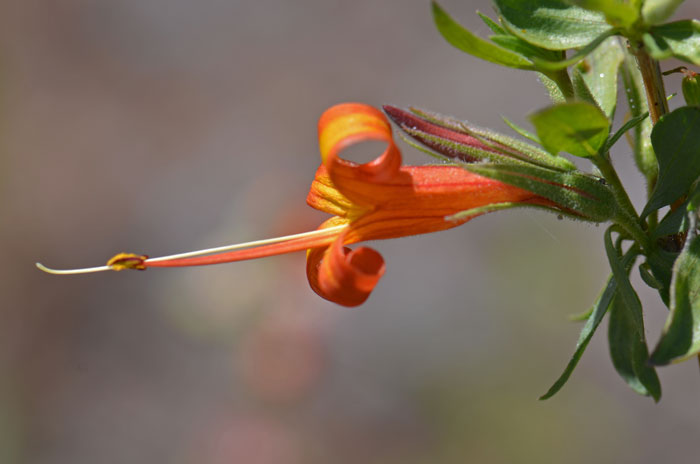
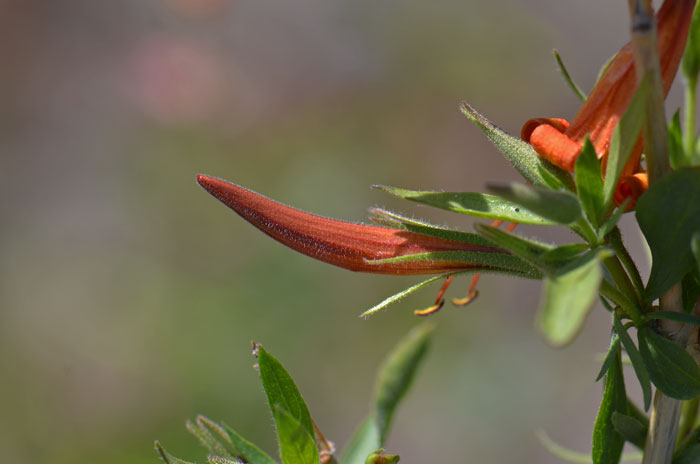
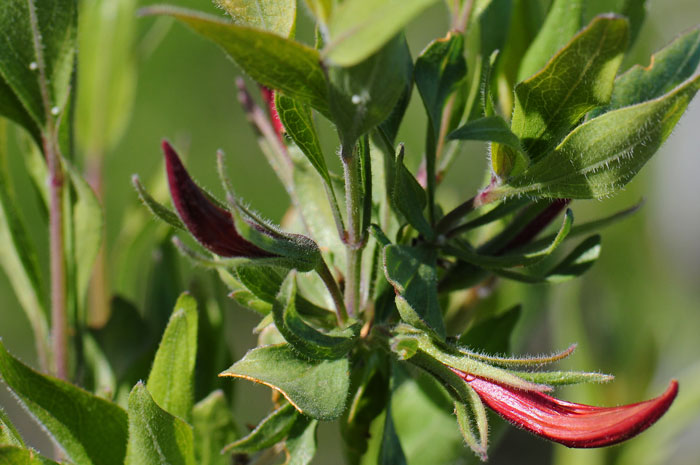
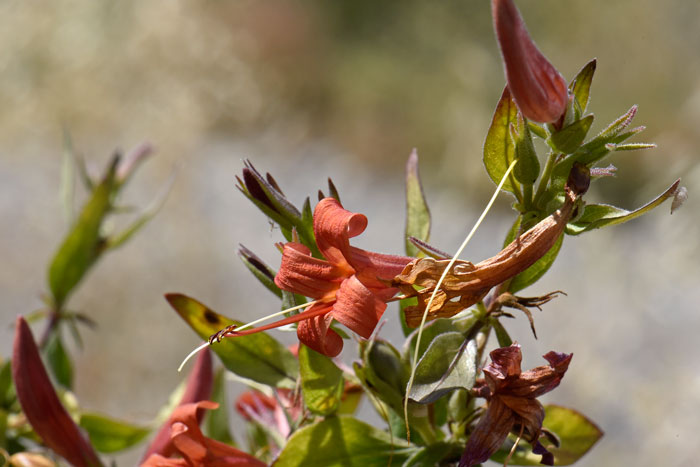
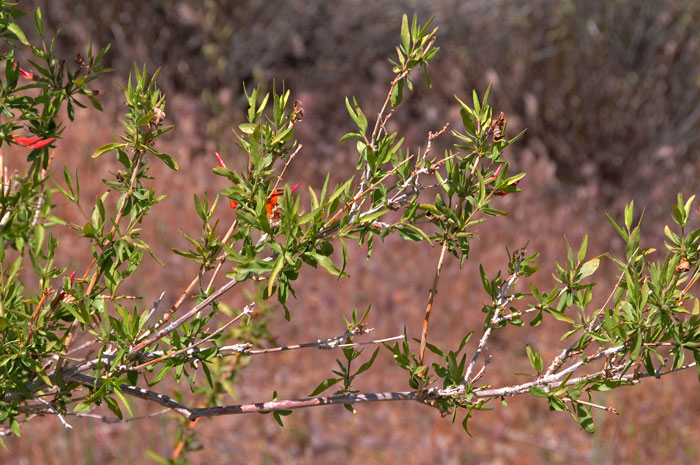
Scientific Name: Anisacanthus thurberi
Common Name: Thurber's Desert Honeysuckle
Also called: Buckbrush, Desert Honeysuckle, (Spanish: Cola de Gallo, Chuparrosa, Colegallo, and Chuparosa)
Family: Acanthaceae, Acanthus Family
Synonyms: (Anisacanthus siphoglossa, Drejera thurberi)
Status: Native
Duration: Perennial
Size: Up to 6 feet or more.
Growth Form: Shrub, erect, stems woody, spindly, rangy handsome shrub with slender horizontal branches.
Leaves: Green; opposite; entire, lanceolate; petiolate, fascicled, about 1 inch long, often deciduous during bloom.
Flower Color: Orange, reddish-orange or orange-yellow, showy; tubular two lipped or bilabiate corolla, curled, stamens exerted, fruits are a flattened capsule from which the seeds are ejected.
Flowering Season: Spring but may bloom throughout the year with sufficient rain.
Elevation: 2,500 to 5,500 feet.
Habitat Preferences: Canyon walls, rocky hillsides and along washes.
Recorded Range: Relatively rare in the United States, Thurber’s Desert Honeysuckle is native only to Arizona and New Mexico. It also occurs in large numbers in northern Mexico. This species grows throughout much of Arizona and in the southwest corner of New Mexico.
North America & US County Distribution Map for Anisacanthus thurberi.
U.S. Weed Information: No USGS data available.
Invasive/Noxious Weed Information: No USGS data available.
Wetland Indicator: No USGS data available.
Threatened/Endangered Information: No USGS data available.
Genus Information: In North America there are 5 species and 6 accepted taxa overall for Anisacanthus. World wide, The Plant List includes 17 accepted species names.
Arizona and New Mexico each have 1 species of Anisacanthus, Texas has 3 species, California, Nevada and Utah have 0 species. All data is approximate and subject to taxonomic changes.
Comments: Although a rare plant in the United States, Thurber’s Desert Honeysuckle is common in Arizona in its preferred habitat, primarily along washes and the lower sides of canyon walls. This species is often used in desert landscaping and in natural areas or as a wildlife plant for its tropical beauty and attraction to birds and butterflies. The tubular flowers are a good source of nectar for hummingbirds.
It is similar superficially to the true honeysuckles which are members of the genus Lonicera (Caprifoliaceae). Arizona is fortunate to call home to thirteen species of the Acanthaceae family which is primarily a tropical and subtropical family of herbs, shrubs or vines from Indonesia, Malaysia, Africa, Brazil, and Central America.
Etymology: The specific epithet "thurberi" is named to honor Dr. George G. Thurber, (1821-1890), American pharmacist, self-taught botanist and avid plant collector. He was hired in 1850 by the U.S. Boundary Commission to survey the boundary between the United States and Mexico.
In Southwest Desert Flora also see: Heath Wrightwort, Carlowrightia linearifolia; Arizona Foldwing, Dicliptera resupinata; Spreading Snakeherb, Dyschoriste schiedeana var. decumbens; and Chuparosa, Justicia californica.

